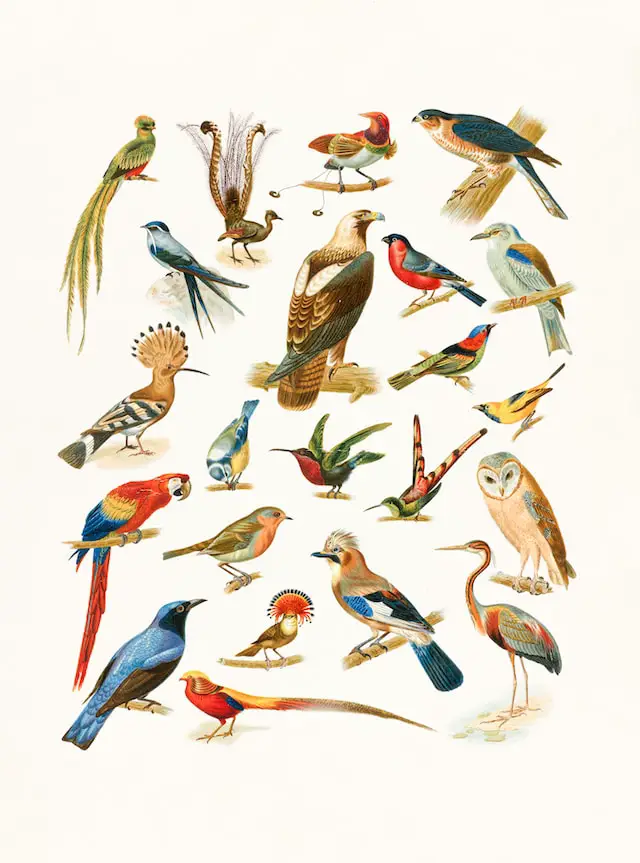A genus is a larger category that includes several species with common characteristics, a species refers to a specific kind of organism with distinct features. The main difference between the two lies in their scope- while the former encompasses all related organisms, the latter focuses only on one particular type of organism. It’s also worth noting that each species belongs to one genus.
What is genus?
In biology, a genus is a taxonomic rank that groups closely related species together. It’s the first part of an organism’s scientific name and comes before the species name.
A genus can be thought of as a group of organisms that share common characteristics or traits such as physical appearance, behavior, or genetics. These similarities allow scientists to classify them together into one group.
Each genus has a unique Latin name that is italicized when written and capitalized. For example, Homo is the genus for humans while Canis is the genus for dogs.
Some genera contain only one species while others have many different species within them. The number of species in each genus varies widely depending on factors such as geographic location and evolution over time.
The classification system based on genuses was developed by Carl Linnaeus in the 18th century and remains important today in biological research and taxonomy.
What is species?
(Photo by Boston Public Library on Unsplash )

Species is a biological classification that refers to a group of organisms that are capable of interbreeding and producing fertile offspring. It is the most specific category in the taxonomic hierarchy, which also includes domain, kingdom, phylum, class, order, family and genus.
Each species has its own unique set of characteristics that distinguish it from other species. These features include physical appearance, behavior patterns and genetic makeup. For example, dogs belong to the Canis lupus familiaris species while wolves belong to the Canis lupus species.
The concept of a species has evolved over time as scientists have gained more knowledge about genetics and evolutionary processes. Today there are different definitions for what constitutes a species depending on the perspective used by biologists.
One common definition used today is called the Biological Species Concept (BSC), which states that a species is defined by reproductive isolation – meaning members within one species cannot breed with members outside their own group or produce viable offspring.
Another concept known as Phylogenetic Species Concept (PSC) defines a group based on shared ancestral traits rather than reproductive capabilities. Other concepts exist but these two are among some commonly discussed ones in scientific literature.
Understanding what makes up a “species” allows us to better understand biodiversity and how life on Earth continues to evolve over time through natural selection-driven processes such as genetic mutations or gene flow between populations within or across related groups of organisms
Genus Vs. Species – Key differences
Genus and species are two of the basic taxonomic ranks used to classify living organisms. Here are some key differences between genus and species:
Definition: A genus is a group of related species that share common ancestry and have similar characteristics. A species, on the other hand, is a group of organisms that can interbreed and produce viable offspring.
Naming conventions: Genus and species are often used together to form a binomial name for a particular organism. The genus name is always capitalized, while the species name is not. For example, the binomial name for humans is Homo sapiens, where Homo is the genus name and sapiens is the species name.
Number of species: A genus can contain one or more species, depending on how closely related they are. For example, the genus Panthera contains four species: lion, tiger, leopard, and jaguar. The species name always follows the genus name and is unique to each species.
Evolutionary relationships: Genus and species are used to understand the evolutionary relationships between different organisms. Species within the same genus are more closely related to each other than to species in other genera.
Importance in classification: Genus and species are important taxonomic ranks that help biologists classify and understand the diversity of life on Earth. By grouping organisms based on their similarities and differences, biologists can better understand how different species are related to each other and how they have evolved over time.
Genus and species are both important taxonomic ranks that help biologists classify and understand the diversity of life on Earth. The genus represents a group of related species, while the species represents a group of organisms that can interbreed and produce viable offspring.
How are they related?
Genus and species are interdependent categories of biological classification. While genus refers to a group of organisms with similar characteristics, species designates individual organisms within that group.
In other words, the relationship between genus and species is hierarchical; every species belongs to a particular genus, which in turn belongs to a larger family or order. This system allows scientists and researchers to organize vast amounts of data about living beings into manageable groups.
The relationship between genus and species can be compared to the relationship between cities and neighborhoods in urban planning. Just as cities contain various neighborhoods with distinct features, genera encompass different species that share certain traits but also have unique attributes.
While there are many similarities among members of the same genus, each individual organism has its own set of characteristics that makes it distinct from others within its grouping at the species level. In this sense, individuals are both part of a community (their genus) while maintaining their own identity (their specific species).
What are some examples of genus?
Here are some examples of genus:
- Panthera: This genus includes the big cats, such as lions, tigers, leopards, and jaguars.
- Canis: This genus includes the dog family, such as wolves, coyotes, and domestic dogs.
- Felis: This genus includes small cats, such as domestic cats, ocelots, and wildcats.
- Homo: This genus includes humans and extinct human-like species, such as Homo erectus and Homo neanderthalensis.
- Mus: This genus includes mice and other rodents, such as rats and hamsters.
- Rosa: This genus includes roses and other flowering plants in the rose family.
- Acacia: This genus includes trees and shrubs in the legume family, such as the acacia tree.
There are many genera that exist in the animal, plant, and other kingdoms. The classification of organisms into genus and species is an important tool in biology for understanding and studying the diversity of life on Earth.
What are some examples of species?
Here are some examples of species:
- Homo sapiens: This is the scientific name for modern humans.
- Canis lupus: This is the scientific name for gray wolves.
- Felis catus: This is the scientific name for domestic cats.
- Panthera leo: This is the scientific name for lions.
- Elephas maximus: This is the scientific name for the Asian elephant.
- Tursiops truncatus: This is the scientific name for bottlenose dolphins.
- Vulpes vulpes: This is the scientific name for red foxes.
- Ursus maritimus: This is the scientific name for polar bears.
- Cygnus olor: This is the scientific name for mute swans.
- Pinus ponderosa: This is the scientific name for the ponderosa pine tree.
There are millions of species on Earth, ranging from animals and plants to fungi and bacteria. The classification of organisms into species helps biologists understand the diversity of life on Earth and how different organisms are related to each other.
How many species are in a genus?
The number of species in a genus can vary greatly. Some genera contain only one species, while others can contain hundreds or even thousands. For example, the genus Homo contains only one extant species – Homo sapiens – while the genus Carex contains over 2,000 different species.
The number of species within a genus is determined by a variety of factors, including evolutionary history and ecological niche. In some cases, closely related organisms may be grouped together into a single genus based on shared characteristics and ancestry.
However, as more research is conducted and new information emerges about the genetic relationships between different organisms, genera may need to be reclassified or split into multiple groups to better reflect their evolutionary history.
The number of species in a genus is constantly changing as scientists continue to study and learn more about the diversity of life on our planet.
How do you list genus and species?
When listing the scientific name of an organism, genus and species are both included in what is called the binomial nomenclature system. The genus name is listed first, followed by the species name. The entire scientific name is written in italics or underlined. The genus name is capitalized, while the species name is not. For example:
Homo sapiens (modern humans)
Canis lupus (gray wolf)
Felis catus (domestic cat)
Panthera tigris (tiger)
Ursus arctos (brown bear)
In some cases, there may be additional taxonomic ranks included in the scientific name, such as sub-species or varieties. These are listed after the species name. For example:
Panthera leo leo (African lion)
Canis lupus familiaris (domestic dog)
Felis catus domesticus (domestic cat)
The binomial nomenclature system helps biologists communicate about organisms in a precise and consistent way, regardless of the language or region they are in.
Featured Image By – Stefan Schweihofer from Pixabay








